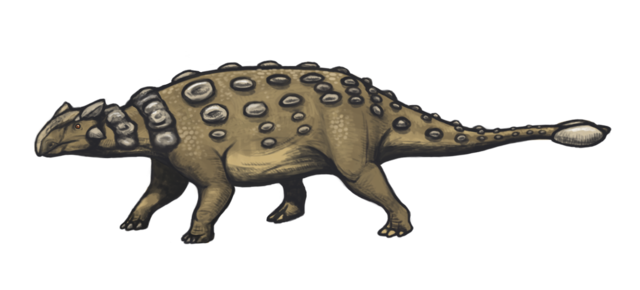Ankylosaurus Facts
Below are some of the facts about Ankylosaurus dinosaur:
- In Greek, Ankylosaurus means ‘fused lizard.’ This name was given to it for the looks it had. The bones on its skull and other parts of the body was fused with each other making the dinosaur look extremely rugged.
- Barnum Brown, a paleontologists coined this name in 1908.
- They lived around 65 to 66.8 million years ago, during the late Cretaceous period. They mainly roamed in the Alberta, Canada and Western United States.
- They were heavily armored dinosaur that had large protrusion at the end of their tail.
- In 1906 the first fossil of the Ankylosaurus was found in Hell Creek foundation in Montana.
- Its fossils are however very rare as they loved to live in places that were away from rivers and were mainly upland.
- In length they were about 20.5 feet long while they weigh around 3 to 4 tons.
- The physical features of this dinosaurs was wide and robust with a narrow beak and low-slung body. Mention about its long tail is already done.
- It walked on its four legs and thus it was a quadruped animal. Still, their front leg were slightly short compared to their hind legs. They had five toes too.
- They were not very fast in running and could reach a maximum speed of only 6 miles per hour.
- The body of the Ankylosaurus was armored and it had massive knobs on it along with large bony plates.
- The bony plates were embedded in their skin and were arranged horizontally along their neck, hips and back. Only their belly was a part where there were no bony plates.
- Apart from this they also had spikes along their body. These spikes and bony plates helped them protecting themselves against the predators.
- The carnivorous dinosaurs like the Tarbosaurus, Tyrannosaurus and Deinonychus were its natural enemy.
- With the club like protrusion at the end of their tail they were able to crush bones of any enemy that came along its way.
- Being herbivores, the Ankylosaurus mainly lived on low lying plants.
- Their teeth were small in size and were designed in such way that they could strip the leaves from the plants.
- It is believed that they had large olfactory bulb that helped them sending smell and with the help of which they found food.
- They had nasal cavity along with complex sinuses and it is firmly believed that it was used for mainly thermoregulation and vocal uses.
